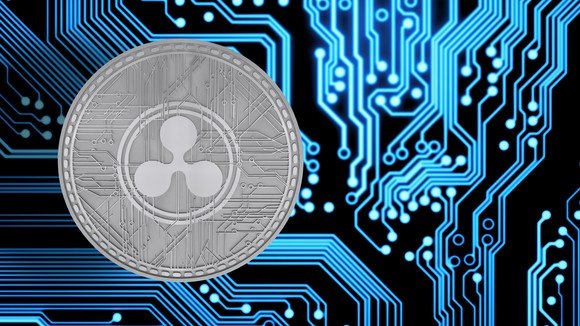Ripple's Biggest Competitor Isn't Ethereum -- It's This Ripple's network is fast and cheap, but so is this directly competitive cryptocurrency.
Even though cryptocurrencies have hiccupped a bit in recent months, they're still the top-performing asset class since the beginning of 2017 by a mile! Having begun 2017 with an aggregate market cap of $17.7 billion, the combined market cap of all digital currencies as of March 26 was just over $303 billion. That's better than a 1,600% gain in just shy of 15 months.
While bitcoin is often credited with leading the charge higher, the past six months have been all about the emergence of other cryptocurrencies from bitcoin's shadow. One such virtual currency that's sprung into the limelight is San Francisco-based Ripple and its XRP token.
Ripple makes a splash
Last year, Ripple surged higher by more than 35,500%, making it easily one of the top performers among all cryptocurrencies. Its run higher has been directly correlated to the company forging a number of partnerships for its XRP token and/or its blockchain -- the digital ledger underpinning most cryptocurrencies that's responsible for logging all transactions without the need for a bank.
Ripple got its big break in mid-November when it was announced that it had partnered with American Express (NYSE:AXP) and Banco Santander in a real-world cross-border payment test. Under the terms of this test, American Express users making non-card payments with AmEx FX International to U.K. Santander accounts will have those payments processed over Ripple's blockchain and settled almost instantly. Ripple, which focuses solely on financial institutions, has suggested that its average processing time is around four seconds. Compared to the wait of up to five business days that can occur under the current banking system, Ripple offers financial institutions a game-changing solution with its blockchain.
Similarly, its token is proving useful in luring potential enterprise customers. In January, Ripple announced a partnership with money-transfer service MoneyGram International (NASDAQ:MGI) that would test its XRP token within the xRapid platform, which helps financial institutions that have on-demand remittance needs. In effect, MoneyGram could pilot the use of XRP as an intermediary currency when moving funds across borders. For example, sending money between the U.S. and Mexico could be seamless and occur within seconds if those funds were converted from dollars to XRP, and then from XRP into pesos. If successful, MoneyGram may soon have a major competitive advantage.
In total, Ripple has landed five brand-name partnerships, and it is regularly expanding bank access to its RippleNet system.

Beware the mighty Ethereum, right?
With over 1,600 investable cryptocurrencies, competition abounds, even for a niche-focused virtual currency like Ripple. Quite a few folks would probably surmise that Ethereum is the biggest threat to Ripple's success -- and a strong case can be made for such an idea.
Ethereum's blockchain technology is currently being tested by 200 global organizations via the Enterprise Ethereum Alliance in a variety of industries, including banking. If there is solace for Ripple, it's that Ethereum's blockchain hits on currency and noncurrency aspects, so it doesn't have that same laser focus on financial institutions that Ripple has.
However, Ethereum brings countless partnerships, proven scalability, and smart contracts to the table. Smart contracts are protocols that aid in the verification, facilitation, and enforcement of a contract. Think of them as the customizable aspect of a digital and legally binding contract. These smart contracts are a big reason the Ethereum network is so popular.
But, what if I told you that Ethereum isn't actually the greatest threat to Ripple? Instead, that title should rightly go to Stellar.